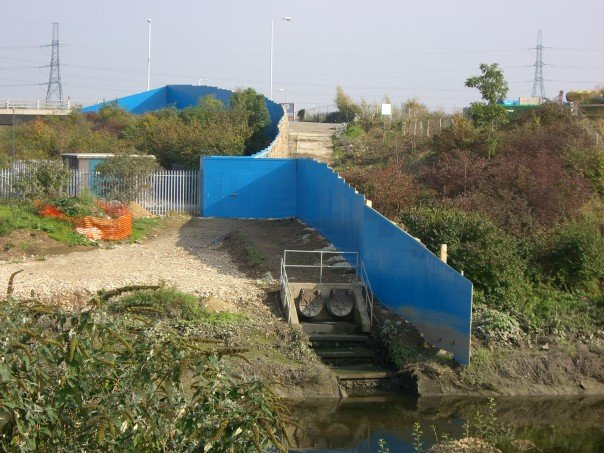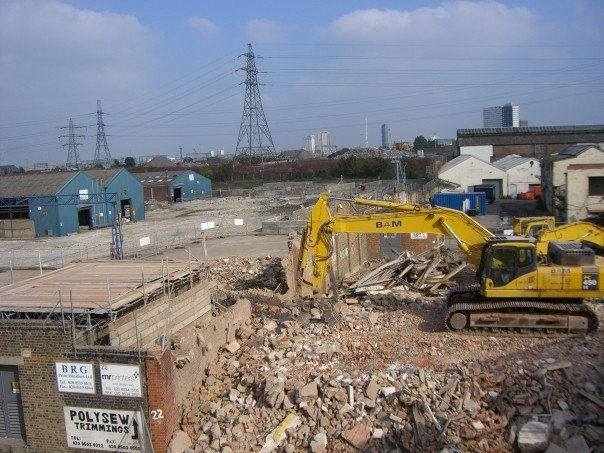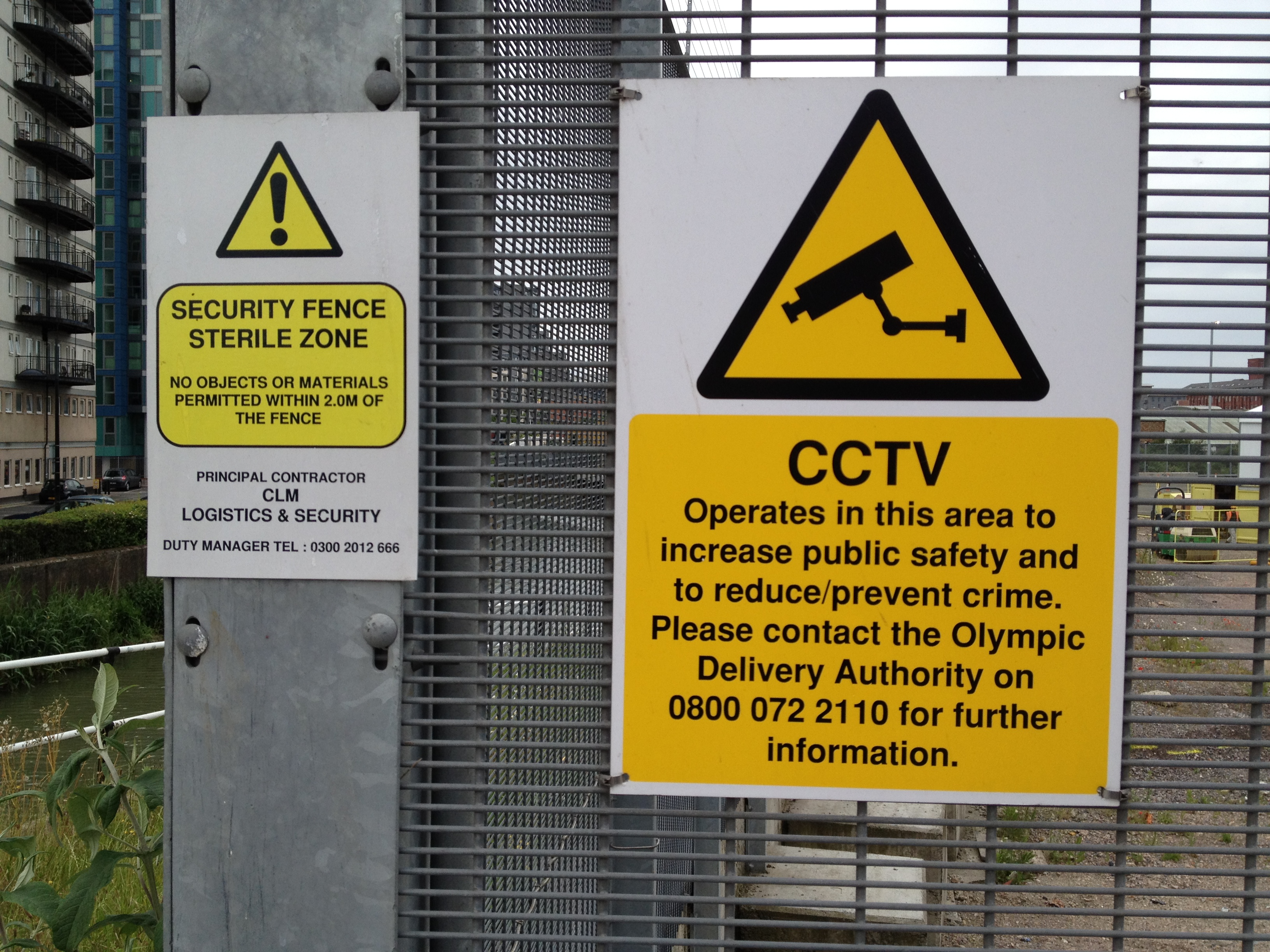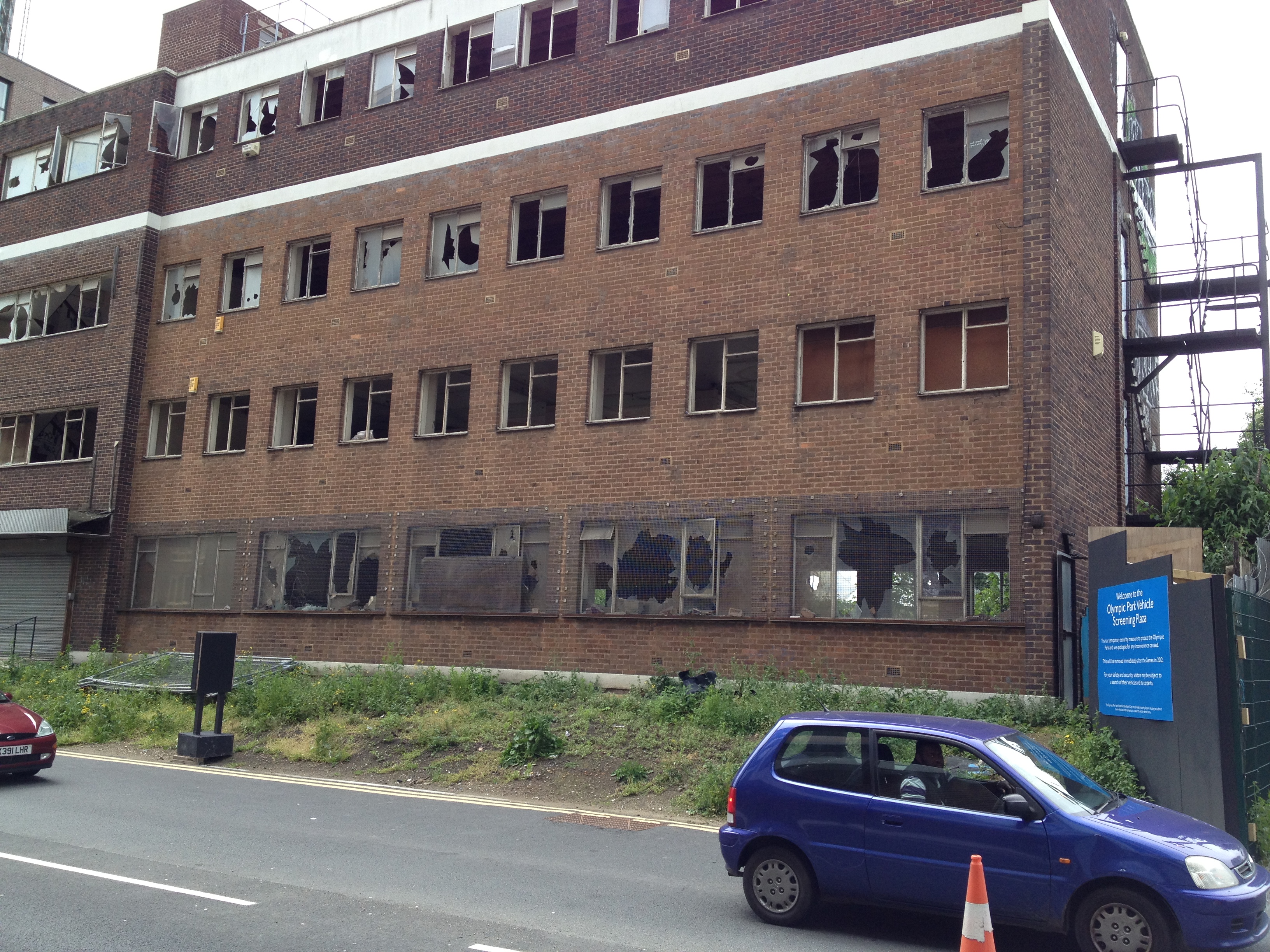In 2007, a group of us attempted to walk the circumference of the Olympic Park in Stratford. It was surrounded by a blue fence, the colour of the off-licence plastic bags strewn across the canal towpath and main roads of the route. ‘Demolish, Dig, Design’, promised lurid posters, their priorities clearly signalled. Peeking over the fence, the park looked to be in ‘demolish’ mode. In 2012, we tried again.
Progress
Right from the very beginning of our bid in 2003, London 2012 has been about what can be achieved through the inspiration and power of sport, using it as a catalyst for positive change and inspiration.
Now, after years of detailed planning and preparations, the foundations of our visions are firmly in place. As well as the physical legacy of the London 2012 Games, which is clearly visible in London’s magnificent new Olympic Park and the transformation of east London, new initiatives and programmes are creating sustainable social, economic and sporting legacies at home in the UK and around the world.
In this section, we outline our aims and achievements in the areas of Youth, Sport, People, Transformation, and London and the UK.
London 2012 website, legacy section.
Backwards
In 2007, we tried to walk around the Olympic Exclusion Zone anti-clockwise, in opposition to the neatly signposted Olympic Zone Walk. Across Stratford High Street we went, down a short slope, and there it was: the fence, a Hollywood blue screen. Then, a problem. The fence was non-continuous, and it became impossible to walk adjacent to it. It seemed we would be forced to describe our own route, an alternative Olympic ring.
We made various false starts, before settling on a stretch of canal adjacent to the blue fence which led us (clockwise, against our intention) by Old Ford Locks up towards Hackney Marshes. We discovered a sodden football, rescued it from the water, and played wall-ball until an overzealous strike returned it to the canal. To our left were buildings, water, sky, bridges and roads; to our right, just the fence. At length we approached a bridge, and were required to continue alongside a road that bisected the marshes. From this higher vantage point, we had our first extensive view into the site itself: a mess, a clutter of demolishing and digging; old buildings half-expunged and new, temporary warehouses.
We took to the road, trailing the fence easily enough for a few hundred yards until we arrived at a junction. The fence continued, but the walkway did not. Clambering over the crash barriers, we scrambled up the verge, now craving the comfort of the fence, its constancy. In between two protective barriers we walked, secluded from the traffic by bush and rubbish, and from the site itself by this perverted côte d’azur.
Reaching the dead end was a blow. We would have to turn around and retrace our steps back to the junction. It wasn’t that we had gone the wrong way exactly, rather that we had been tricked. Back we trudged to a bridge at the junction under which passed a clearly visible new stripe of blue, but one that was not connected to any that we had walked before. We should have stopped, but didn’t. Perhaps we were all egging each other on, or perhaps we wanted to make absolutely certain of rounding the perimeter, but we elected to go north-east along the A12, sure that an exit would be available, one which would let us rejoin the fence. Every few hundred yards there was a lay-by in which we would reconvene and, shouting above the road’s foul breathing, discuss our limited options. Skirting the road were various objects – pieces of car, discarded newspapers, pebbles, metallic waste and an occasional item of children’s footwear. We walked in single file, marching against the current next to the high sides of the cut out roadway. Drivers honked their horns to remind us that this was not our territory; aghast faces stared disbelievingly out of windows. At last, a slip road, and then a Tesco supermarket delivery car park. We cleared the crash barrier, crossed a smaller road, and went to a pub with Olympic-fence-blue benches.
Completing the loop of the site had proved beyond us, but we could still complete a loop of sorts. We tracked the edge of Wanstead Flats; grazing land until the BSE scare, now emptied.
From Wanstead to West Ham, aiming for the cemetery, we walked dazed through run down streets. Predictably, the cemetery was closed. Back in Stratford, we came across some posters promoting the games, designed by local schoolchildren and community concerns. In one, an archer shot arrows at a target, under the multicoloured heading: CULTURE.
Forwards
Five years later we went back, in June, six weeks before the start of the games. We were optimistic that this time there’d be fewer problems. The site would surely be more or less ready to go; the route around it (or inside it) far clearer.
To approach the Olympic Park from Stratford rail station requires walking through the Westfield centre, an Australian shopping mall that’s a distorted mirror image of one on the other side of the city in Shepherd’s Bush. More or less every visitor to the Games site will walk through it, past The Calf and The Cow (in Shepherd’s Bush, there is The Bull), alongside Hugo Boss and Prada, observing, no doubt, the public-art-as-consumer-space water fountain. By extension, the Stratford Olympic site might also be a mirror image: of the long-gone White City Stadium, host of the 1908 Olympics just down the road from Westfield Shepherd’s Bush.
Passing through the shopping centre, you come to a fence. It’s wire, solid, and about 15 feet tall; more robust and less welcoming than the 2007 blue. A security perimeter. There’s a sign in front of us: ‘No public access / Public viewing is available from John Lewis’. The word ‘public’ means something different here. And yet, as Anna Minton points out, less than 2% of the budget for the Olympic Games has come from the private sector, a result of the economic downturn and some over-optimistic predictions. It was bailed out by the government. Nonetheless, she says, ‘developments will be entirely private, sold off piecemeal to the highest bidder’. In this instance, as ever, private means secure; we can expect drones above Westfield to go with the missile batteries on the roofs of Bow. As Iain Sinclair puts it in Ghost Milk, ‘there will be no perceptible difference in techniques of control employed in war zones and in homeland development zones; making the world a safer place for shopping.’
We walk anti-clockwise, as we tried before, and as before, we get nowhere. There’s fence everywhere, then a bridge behind, security guards watching it from a hut, a tent through which volunteers of some kind are being checked, and a man with a pony tail taking photographs. We ask the guards if it’s possible to get into the site, or to walk around the outside. No, they say. During the Games, people will be able to go into the park, though not the venues, for an allotted time at a cost of £10. The guards don’t know what will happen afterwards.
Of course, the Games have not started yet; much, presumably will change before they do. It needs to. We walk the other way, clockwise as before, the impossibility of turning back time ever more apparent. There’s not very much to see. Anish Kapoor’s meccano helter skelter (£15 to go up, on top of the £10 to get into the park) looks like an accident next to the flatpack stadium. Better is the aquatic centre, sleek and winged. The whole lot could be a theme park (Sinclair calls it ‘a theme park without a theme’), or worse, a giant leisure centre, redolent of suburban ice rinks and bowling alleys. And it’s all so provisional, so temporary. Outside the site too, where we are, this time-limitedness pervades. Places we walked in 2007, canal towpaths still signposted with valiant plastic telling us to ‘Walk The Olympic Park’, are now impenetrable, overgrown, dead-ended or fenced off. The Greenway is closed. The Strand East development around the back of the site (urban planning by IKEA) picks up on the punchy slogans of the Olympics themselves: WORKING AND LIVING / LOVING AND LAUGHING / EATING AND RESTING. Of course, this is a development that has not yet been developed, but it will be – all 26 acres of it – by about 2018, assuming it makes financial sense.
 One of the major problems with that ‘Demolish, Dig, Design’ back in 2007 was its lack of interest in continuity. There are very few examples, certainly in England, of successful architectural projects that so wholeheartedly reject engagement with the existing conditions of a space. Demolish what? It didn’t matter (though strangely, there are still plenty of buildings that remain just outside the perimeter of the site, derelict and ripe for demolition). The memories of the space have been erased. What this means is that the Olympic site seems alien. It is not part of the locality in which it sits – it’s a gleaming white island buttressed by multicoloured, occasionally ‘affordable’, blocks of flats, which seem unoccupied for now. Where is the Olympic site? It makes no more sense to answer that question with the word ‘Stratford’ than it would with Stockport, or Aarhus, Des Moines, Lagos or Rye. The Olympic site is simply where the Olympic site is.
One of the major problems with that ‘Demolish, Dig, Design’ back in 2007 was its lack of interest in continuity. There are very few examples, certainly in England, of successful architectural projects that so wholeheartedly reject engagement with the existing conditions of a space. Demolish what? It didn’t matter (though strangely, there are still plenty of buildings that remain just outside the perimeter of the site, derelict and ripe for demolition). The memories of the space have been erased. What this means is that the Olympic site seems alien. It is not part of the locality in which it sits – it’s a gleaming white island buttressed by multicoloured, occasionally ‘affordable’, blocks of flats, which seem unoccupied for now. Where is the Olympic site? It makes no more sense to answer that question with the word ‘Stratford’ than it would with Stockport, or Aarhus, Des Moines, Lagos or Rye. The Olympic site is simply where the Olympic site is.
Stop
One of the best things about London is how it allows people to own it. It allows space for movement and for cultures, both those kinds of cultures that people are talking about when they talk about multi-culturalism, and something simpler: groups with shared passions. My London is not your London, which is not someone else’s London, but at their best, those different iterations of the city co-exist, perhaps even burnishing each other. Because you can still lose yourself in the city, it can still sometimes, even fleetingly, feel like it’s ours, and like that arrangement need not be contractual or financial. The Olympic Park, for all its inclusion and welcome, runs counter to that sense. It is not ours. It is theirs. If it were ours, we could go inside it, wander round it, occupy it, pay for it with our taxes and not pay for it again. It’s quietly dispiriting.
This is legacy
The Poet Laureate, Carol Ann Duffy, parrots the official line about legacy, that stuff about “achievements in the areas of Youth, Sport, People, Transformation, and London and the UK”. Her poem ‘Eton Manor’ looks at one of the Olympic sites through the rare prism of its history. The manor, developed by public school philanthropists in the 1880s, will host training pools and the Paralympic wheelchair tennis.
This is legacy-
young lives respected, cherished, valued, helped
to sprint, swim, bowl, box, play, excel, belong;
believe community is self in multitude-
the way the past still dedicates to us
its distant, present light.
(‘Eton Manor’, Carol Ann Duffy, 2012)
What legacy will the Olympics leave? The choice of that word is instructive. A legacy is given posthumously. It sometimes seems as if the principal legacy of the Olympics is ‘having had the Olympics’, as if the mere fact of a few weeks’ sport is transformative. It isn’t. Sport happens all the time. The main difference between the Olympics and, say, international football tournaments, is that people like football, not some higher ideal that allows some to write their names in BBC montages for all eternity by running really fast or manoeuvring a boat backwards in front of an audience which barely registers their existence for the 214 weeks between games. Now, it’s possible, I suppose, that the Games will inspire a generation of youngsters to better themselves through ‘the inspiration and power of sport’, especially if they have tickets, and especially if they have the resources, backing and confidence to pursue athletic success. I hope so. Because this is the most grievous of Olympic sins: selling the Games as something for the young, when the only clear beneficiaries at this point are sponsors, the mayor, Visa and the London Legacy Development Corporation.






To comment on an article in The Junket, please write to comment@thejunket.org; all comments will be considered for publication on the letters page of the subsequent issue.